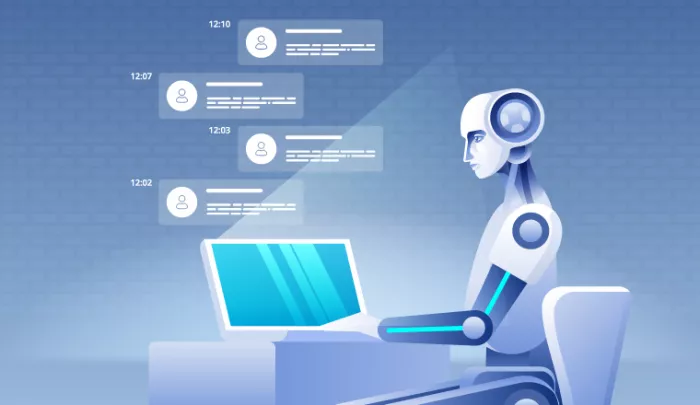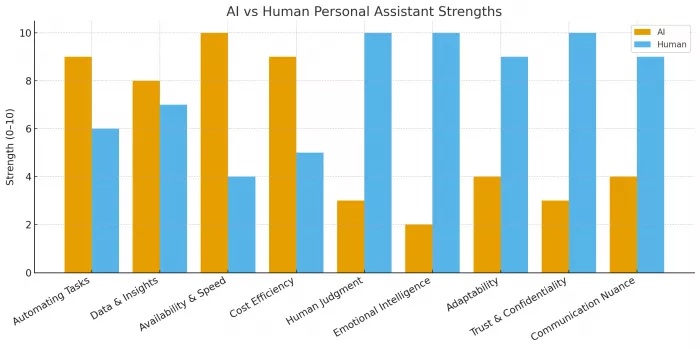
We live in a moment of accelerating change. Artificial Intelligence (AI) tools are advancing fast. They promise efficiency, availability, and often a lower cost. Meanwhile, the role of a personal assistant (PA) (or executive assistant) has long stood as one rooted not only in tasks, but in judgment, trust, human relationships, and subtlety. AI assistants are effective in areas where work is repetitive and structured.

But most importantly. Despite strengths, AI falls short in areas that rely on judgment and empathy.
The answer is mixed. AI can’t fully replace a PA, but it can handle many repetitive tasks. The real value is in a hybrid model: where the AI manages routine admin.
Humans handle strategy, relationships, and judgment.
A PA using AI effectively will always outperform working alone. The emerging model is of augmentation: AI tools are assistants to assistants (or executives), not replacements for all functions. A human PA who uses AI well will outperform one doing everything manually.

Here’s a clear comparison chart of AI vs Human personal assistant strengths. It shows where AI dominates (automation, speed, cost) and where humans remain stronger (judgment, trust, empathy, adaptability).
AI is powerful, but it doesn’t replace the depth of a human assistant. Here at this platform, we show how routine work can be automated, while the human side of empathy, trust, and judgment remains essential.
The future isn’t about choosing one over the other. It’s about letting AI handle the noise so humans can focus on what truly needs a personal touch.
Discussion